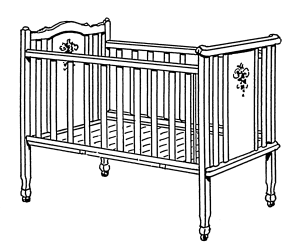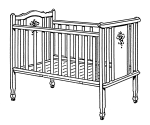strong>by Author Macal Gordon – ICPA.org:
Common Co-Sleeping Myths
The recent Consumer Product Safety Commission (CPSC) finding that adult beds are inherently hazardous is both misleading and inaccurate. Parents should know that this recent campaign is sponsored and financed by the Juvenile Product Manufacturing Association (i.e. crib manufacturers), an organization that has everything to gain from parents choosing to buy cribs. Parents should also know that perhaps millions of parents sleep safely with their infants every year. A recent study persuasively documented that babies who sleep on their backs with a non-smoking, non-drinking, parent who did not abuse drugs show no greater risk than solitary sleepers.
Dr. McKenna, professor of anthropology and director of the Mother-Infant Sleep Lab at Notre Dame, gives the following safety suggestions: “Infants should sleep on firm surfaces, clean surfaces, in the absence of smoke, under light (but comfortable) blanketing, and their heads should never be covered. The bed should not have any stuffed animals or pillows around the infant and never should an infant be placed to sleep on top of a pillow. Sheepskins or other fluffy material and especially beanbag mattresses should never be used. Water beds can be dangerous, too, and the mattresses should always tightly intersect the bed frame. Infants should never sleep on couches or sofas — with or without adults — where they can slip down (face first) into the crevice or get wedged against the back of a couch.”
If they sleep in your bed, they’ll never leave. This has never been studied or documented, and anecdotal evidence from co-sleeping parents does not bear this out. Many co-sleeping parents report that their children become willing to leave, with little or no persuasion, on their own around age two or three, as they mature physically, emotionally and cognitively. These families also report that there are many ways to help children find their own sleeping space.
Co-sleeping families tend not to see things in terms of habits that need to be broken, but as patterns that can be established, but that continually evolve and change. For co-sleeping families, laying the foundation for security and closeness takes precedence over early independence.
Article originally posted at ICPA.org.
